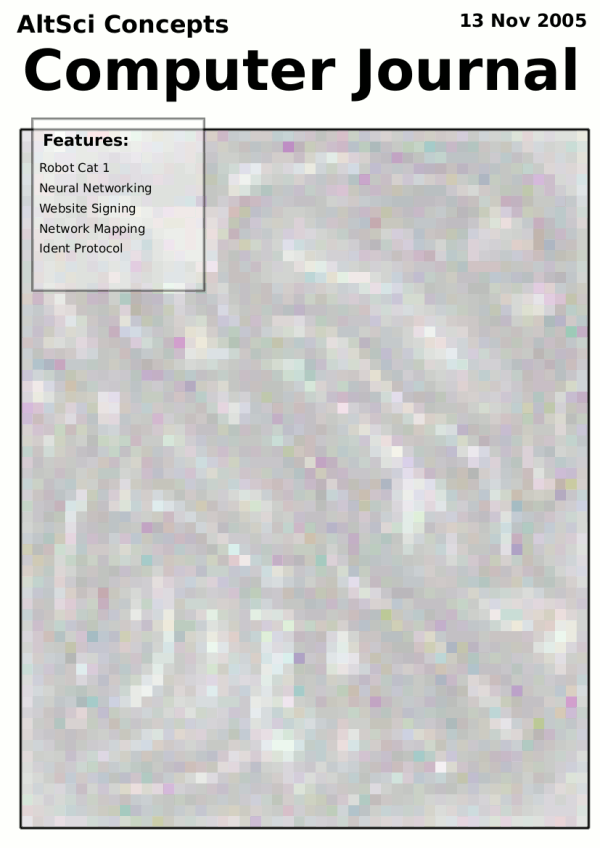by Javantea aka. Joel R. Voss
Analysis: Sept-Oct 2006
Write-up: Nov 9, 2006
LSASS Vulnerability Analysis
Botnets
In my previous essay on botnets, I referenced my work in May 2004 analyzing the threat posed by the LSASS vulnerability and worm. I also wrote that LSASS continues to suffer from vulnerabilities, the latest being Aug 10, 2006. I ran a honeypot quite similar to the one ran in 2004 (updated to capture traffic) and produced the results found in the data section. As we can plainly see, worms are still exploiting these vulnerabilities.
A simple analysis of traffic captured by a honeypot on TCP ports: 135, 139, and 445. These are ports normally open on Windows computers.
Read more »Webcam Algorithm Input Method 5
by Joel R. Voss aka. Javantea
jvoss@altsci.com
jvoss@myuw.net
Sept 16, 2006 - Oct 26, 2006
Webcam Algorithm Input Method 5 0.1 Source
[sig]
Webcam Algorithm Input Method 5 Beta Source
[sig]
Webcam Algorithm Input 1 0.1 Source
[sig]

For many projects, using a webcam hooked up to a Linux-based PC is an
excellent input method. Since many laptops also contain serial and parallel ports, a program can be written that uses a USB webcam and serial port for input and serial ports and parallel ports for outputs.
The simplest way to get webcam input is from a program that is already good at getting this input. For the first alpha versions of webc5, I used Transcode, but others are available. With
Transcode, I was able to get input properly. However, latency between Transcode and my program was enough to require a rewrite. Luckly, Transcode is open source, so I was able to copy the source, modify it, and rerelease it GPL. It ends up that the v4l interface is actually pretty straightforward. Using this method, I can import frames and do mathematical functions on them at 20 fps average on a fast computer with a fast camera (a lesser camera gets 8 fps average). This version 0.1 is a simple motion tracking system that simply shows a double buffer system and the output of the function td(p) = threshold(diff(p[n], p[n-1]));





